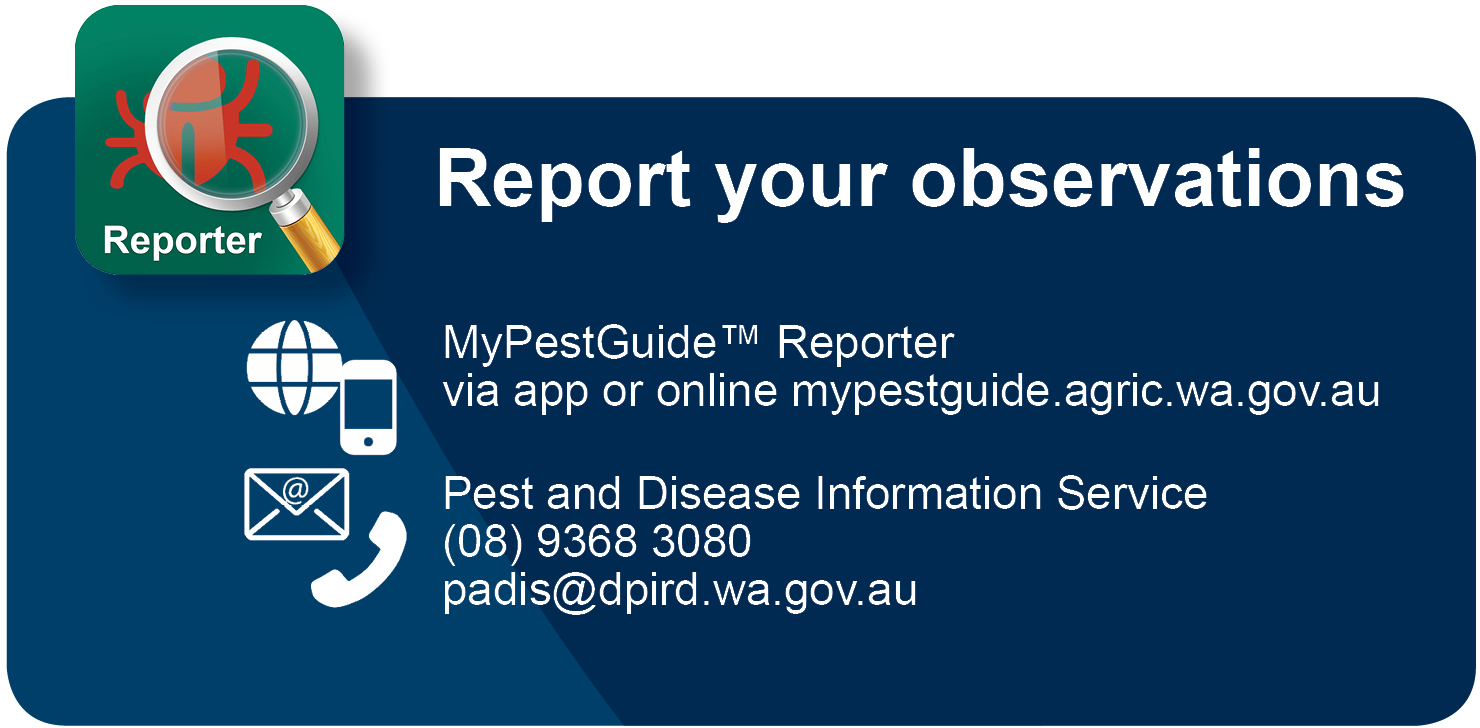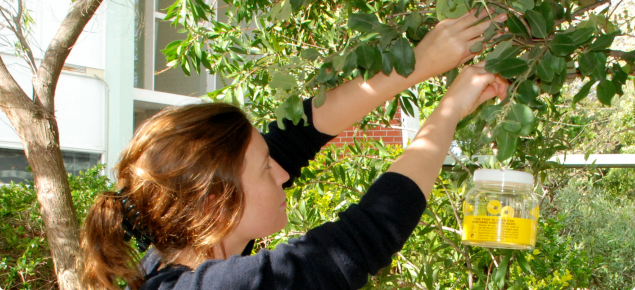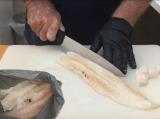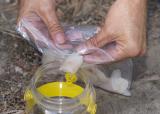The trapping method used in the Adopt-a-Trap Program is very successful in catching European wasps. They address the wasps sense of smell and foraging habits to find food. These traps are quite useful in alerting us to the presence of a nearby nest. Wasp nests are usually found within 200 metres from where wasps are caught in a trap.
These traps are not designed to trap or control paper wasps which are common throughout the metropolitan area. Other wasps, bees and flies can be occasionally trapped if protein lures are used.
Setting a trap
Traps should use a lure that maximises attracting wasps to the trap. Fresh, non-oily white raw fish (such as pink ling) is the most effective lure to catch European wasps and the easiest to work with. Instead of rotting, it generally dries up to a hard, almost odourless cube.
Traps should be located in main entry points into WA. As European wasps are primarily introduced via imported merchandise, the most likely places to trap them are industrial areas and freight end-points (terminals, trucking yards and ports).
Traps should be placed along the wasps flying routes. In built-up environments, wasps fly along corridors between their nest and food sources - usually drain reserves, paths and roads. If a trap is placed in a flight corridor, wasps will smell the fish when flying past and be drawn to the trap.
Traps shouldn't be hidden. The trap should hang free from contact with other branches or foliage, so entry holes are unrestricted and ant access is limited.
| The traps are more effective where alternative food sources are scarce. |
Instructions
Trap servicing
Renew the lure and check the trap every week if possible, otherwise fortnightly. This is because the fish lures are most effective in the first 48 hours, and dead wasps are sometimes removed by ants.
The traps will only need replacing if damaged. Contact us if you require a replacement.
Things to remember
Register your trap position by making a report on the MyPestGuide™ Reporter webpage or app. Alternatively, let our Pest and Disease Information Service (PaDIS) know you are trapping this year along with your address. We know there are traps out there, but we love to know when your traps are active and where they are each season.
Always check the traps carefully. Sometimes you may only see remains of the wasp - such as a head or abdomen - as ants can enter and eat trapped insects. Report these so we can help with the ID.
Report suspect trap catches. Taking photos and submitting for identification via MyPestGuide™ Reporter or email them to PaDIS is the quickest avenue for ID.

Alternatively samples can be dropped to your local DPIRD office or posted to PaDIS.
- Post dead wasps in a crush proof container to
Pest and Disease Information Service
Department of Primary Industries and Regional Development
Locked Bag 4, Bentley Delivery Centre WA 6983.




